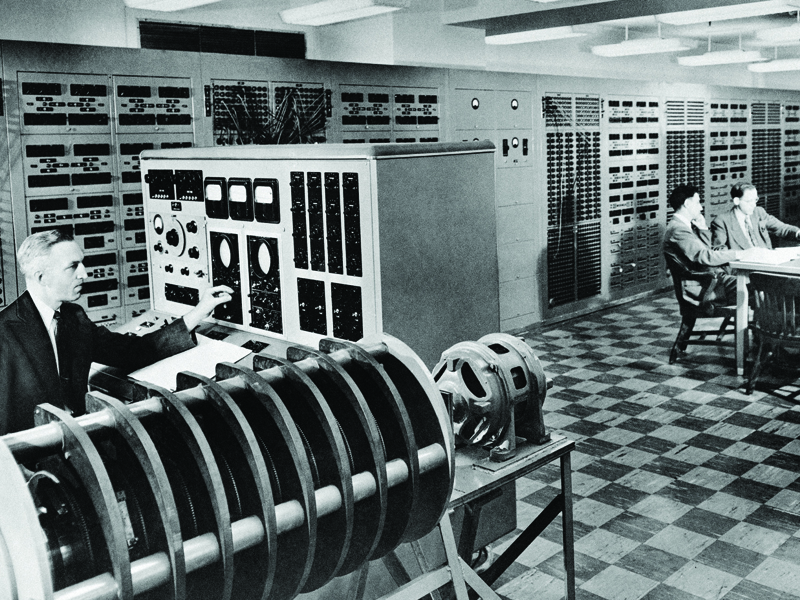A US trial of sharing notes online with patients has evolved into a national movement
A US trial of sharing notes online with patients has evolved into a national movement
A US experiment in doctors sharing visit notes with patients via an online portal suggests transparency is very good medicine – and not just for well-informed, tech-savvy white folks.
Like many Australian GPs eyeing the arrival of patient-controlled electronic health records, the American primary-care doctors participating in the OpenNotes program had a host of reservations, mainly about the impact on work flow.
But while their misgivings were borne out in just a handful of cases, the benefits were consistently strong, according to Dr Sigall Bell, the program’s director of discovery and patient safety, who presented the findings at last month’s Health Informatics Conference in Melbourne.
The initial study recruited 105 doctors located in Boston, Seattle and Pennsylvania, who offered their patients online access to consultation notes. Around 80%, or 20,000 patients, took up the offer.
After a year, 75% of those patients reported the program had helped them understand their condition and take better care of themselves. Two-thirds were better at taking their medications as prescribed. And only 1% to 8% said the notes had made them worried or confused.
Dr Bell, an associate professor at Harvard Medical School, said patients were empowered by the experience and happy to overcome the “amnesia” that commonly occurred when they left a doctor’s clinic.
“Again and again, we kept hearing that the patients felt they were better at remembering. It was no longer just a two-minute conversation; the notes extended the visit,” she said.
Patients also appreciated being able to involve their families and carers, saying it was helpful to show them the information rather than rely on their recollections.
For their part, 42% of the 99 doctors who completed the year-long study feared the note-sharing would mean spending more time addressing patients’ questions. But only 3% found it did.
While 24% suspected it would lead to longer consultations, that outcome was noted by only 2%. And where 39% had worried they would end up spending more time on their notes, just 11% said that was actually the case.
In fact, most doctors commented that the process spurred them to write better notes and found the “power of print” effective in reinforcing their advice to patients.
Dr Bell pointed out that many of the study’s most striking findings were psychological, with patients reporting improved trust and confidence in their doctors – 37% said doctor-patient relations were better as a result of OpenNotes and 62% said they were the same.
Remarkably, 85% of patients reported that the transparency provided by OpenNotes would be a criterion they would use in choosing a doctor in the future.
The results also blew away any preconception that well-educated, technologically savvy patients would benefit most from the system.
In fact, older people and vulnerable groups – non-white patients, those with poorer self-reported health and those with less education – felt they had the most to gain. Among those patient groups, 44% said they felt better about their doctor after reading the notes.
In an interview after the 2010-2011 study, one doctor suggested clinicians might traditionally have over-estimated the importance of the patient visit alone.
“This is a powerful tool. There is something about seeing something in writing that I think may be very powerful to amplify, or to reinforce, a plan or a priority.”
Interestingly, while the doctors could choose to hide a note that could harm a patient, so it would not appear on the secure patient portal, very few had occasion to do so.
The findings also emphasised the potential for OpenNotes to improve patient safety. Few patients in the study (7%) contacted their doctor after reading the notes, but about a quarter of those who did were reporting a perceived error.
Dr Bell said the program’s success had generated a national movement, with more than 8.5 million American patients now having easy access to their notes.
“This is communication as medicine,” she said, adding the computer technology played an important role but was not strictly necessary.
“OpenNotes is not a software program, it is a decision about transparency,” she told The Medical Republic.
“Notes can be shared even without any kind of technology. Providers who do not have portals can give patients paper copy of their notes. This has been done at some organisations already.
“Doctors and researchers are quickly discovering new horizons for patient engagement through OpenNotes, including paediatrics, mental and behavioural health trials, vulnerable populations, patient safety initiatives including a patient reporting tool linked to OpenNotes, and other innovations.”
The research and demonstration project was devised by Harvard professor of medicine Tom Delbanco and researcher, assistant professor Jan Walker, partly inspired by one of Dr Delbanco’s patients, a heavy drinker.
When counselled to quit the habit, the patient said: “You better write that down, Doc.”
Dr Delbanco realised the patient was reading his notes upside down, and that got him thinking about the power of the printed word to help patients become more engaged with their healthcare.
In an interview clip screened at the conference, Dr Peter Elias of Maine, who has been sharing his notes for several years, echoed the sentiment.
“I think one of the benefits for everybody moving away from ‘doctor knows best’ to doctor and patient working together, is that it’s going be recognised that the team owns the outcome,” Dr Elias said.
Dr Bell said: “Also, we are seeing that patients, by virtue of being able to see their notes, are beginning to see their healthcare not just as discrete disconnected events but rather as events along a continuum, and they are interested in charting their progress.
“Having access to their notes can increase a sense of ownership and partnership in their health.”


